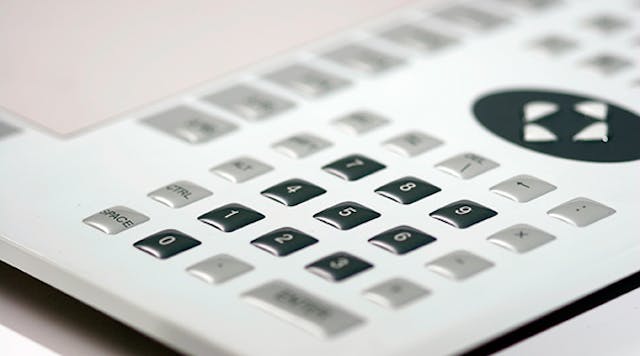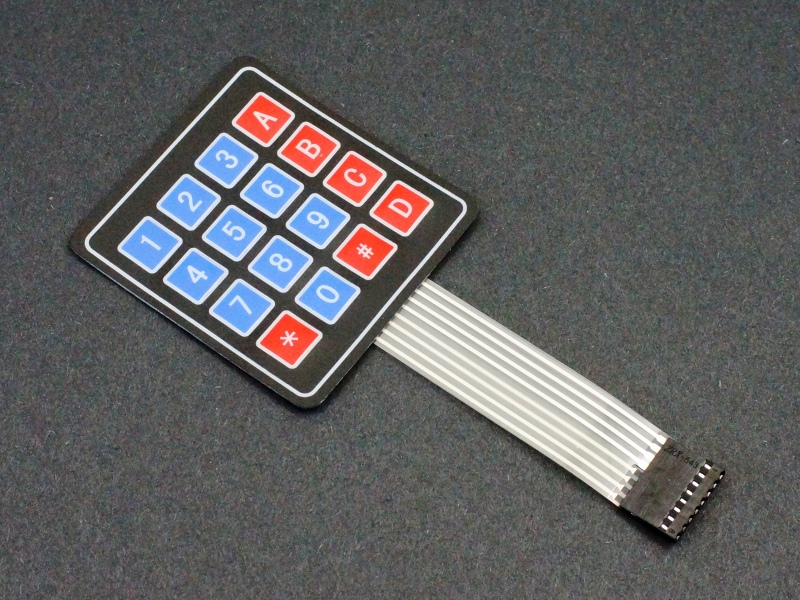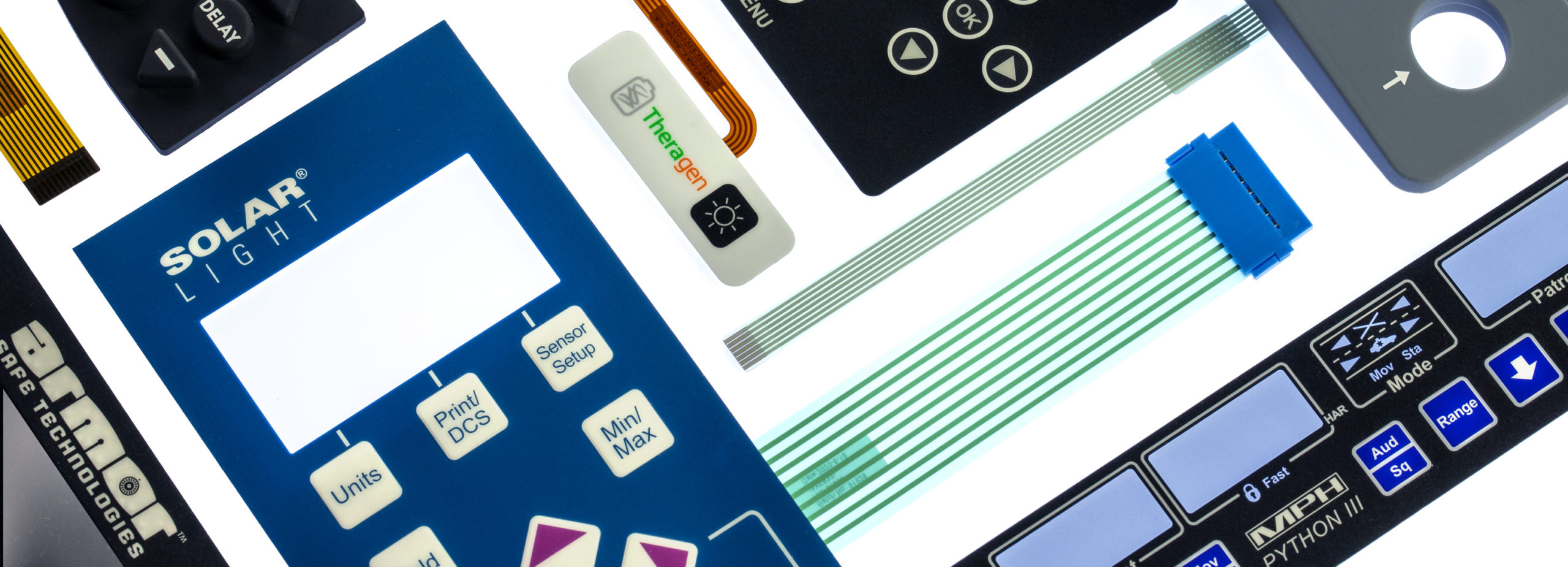How Membrane Switches Are Revolutionizing User Interface Design
How Membrane Switches Are Revolutionizing User Interface Design
Blog Article
Understanding the Value of Membrane Switches in Interface
Membrane switches are important components in the design of reliable customer interfaces, promoting not only capability but additionally improving aesthetic appeal and customer interaction. As we check out the different advantages and future patterns linked with Membrane modern technology, it ends up being clear that these switches are extra than just parts; they represent a merging of advancement and usefulness.
What Are Membrane Switches?

The spacer layer, which consists of sticky homes, permits the splitting up of the circuit layer from the overlay, ensuring that the switch continues to be in a non-activated state up until pressed. When pressure is put on the overlay, it compresses the spacer layer, bridging the void and finishing the circuit in the underlying layer. This design not only minimizes the physical room required for traditional mechanical buttons but additionally boosts the sturdiness of the gadget, as Membrane switches are normally immune to dust, wetness, and other environmental variables.
Typically discovered in applications varying from consumer electronics to medical gadgets, Membrane switches are indispensable to modern innovation, giving a easy to use and reliable interface that lines up with contemporary design requirements.
Benefits of Membrane Switches
While countless switch innovations exist, Membrane Switches offer distinct benefits that make them especially preferable in different applications. One of the key advantages of Membrane buttons is their small style, which permits space-saving implementations in tools where realty is limited. Their slim profile not only improves visual appeal but additionally assists in light-weight building.
An additional considerable benefit is their resistance to ecological aspects. Membrane switches are typically secured versus dampness, dust, and contaminants, making them perfect for use in requiring atmospheres, such as medical devices and industrial equipment. This longevity expands the lifespan of the switch, reducing upkeep costs and boosting reliability.
Additionally, Membrane switches can be customized to fulfill specific design requirements, including distinct graphics and shades that enhance customer interaction. Their tactile comments options can additionally be tailored to give a satisfying customer experience. Furthermore, Membrane buttons are cost-efficient, particularly in high-volume applications, as they can be produced effectively.
Applications in Numerous Industries

In the consumer electronic devices industry, Membrane buttons are widespread in devices such as microwaves, washing makers, and remote controls. Their tactile responses and her comment is here visual options improve read more individual experience while supplying a streamlined, contemporary appearance. In addition, automobile suppliers make use of Membrane switches in dashboard controls and infomercial systems, where area is limited, and customer interaction is vital.
Additionally, the industrial market leverages Membrane buttons in control panels for machinery and equipment, permitting user-friendly operation in typically severe environments. Their resistance to chemicals and moisture ensures durability and reliability in these applications. Overall, the flexibility of Membrane Switches contributes considerably to their widespread usage, making them crucial in different technological domain names.
Style Factors To Consider for Membrane Buttons

When developing Membrane buttons, a number of vital factors to consider should be thought about to make sure optimal capability and user experience. The selection of materials is crucial; choosing resilient, high-grade substrates can improve the button's durability and resistance to ecological variables such as moisture and temperature level fluctuations.
Secondly, the style of the visuals overlay must prioritize clearness and ease of usage. Icons and text have to be understandable, and the layout ought to assist in intuitive interaction (membrane switches). Additionally, responsive comments is important; including a tactile dome or various other systems can boost the user experience by offering physical verification of activation
One more vital variable is the button's electrical performance. Designers have to make sure that the conductive traces are effectively developed to decrease resistance and stay clear of signal interference. This includes evaluating the called for actuation force and ensuring compatibility with the digital components they will user interface with.

Future Fads in Membrane Technology
As innovation remains to development, Membrane switches are poised to develop significantly, driven by technologies in products and manufacturing methods. One emerging trend is the unification of advanced materials, such as conductive inks and versatile substrates, which enhance resilience and decrease the total weight of informative post Membrane buttons. These products not just boost the tactile reaction but also permit the style of buttons that can stand up to harsher environmental conditions.
Furthermore, the combination of touch-sensitive innovations is changing standard Membrane Switches right into more interactive individual interfaces. Capacitive touch sensors embedded within Membrane button panels can give a more responsive and instinctive user experience, lining up with the growing demand for streamlined, modern-day designs in consumer electronics.
Additionally, innovations in printing methods, such as digital and 3D printing, allow quick prototyping and modification of Membrane buttons. This adaptability enables producers to respond faster to market needs and consumer preferences.
Last but not least, sustainability is ending up being a considerable focus, with makers checking out green materials and processes. As these patterns unravel, the future of Membrane technology assures boosted functionality, aesthetic appeal, and ecological duty, solidifying their duty in innovative interface throughout different markets.
Final Thought
In final thought, Membrane Switches represent a vital element in the design of customer interfaces, incorporating performance with visual versatility. Their benefits, consisting of toughness and resistance to environmental aspects, make them suitable for diverse applications throughout different markets. Thoughtful style considerations boost individual communication and experience. As developments in modern technology proceed, the evolution of Membrane switches is anticipated to more fine-tune interface, driving advancement and boosting usability in a progressively complicated technical landscape.
Membrane buttons are integral components in the layout of effective customer interfaces, facilitating not only functionality but additionally boosting visual charm and user interaction.Membrane Switches serve as an essential component in various user interfaces, assisting in a seamless interaction in between users and electronic devices.While various button innovations exist, Membrane Switches offer distinctive benefits that make them especially preferable in different applications.Moreover, Membrane switches can be personalized to meet certain style needs, including special graphics and shades that improve user communication.In final thought, Membrane Switches stand for an important part in the style of user interfaces, combining capability with visual versatility.
Report this page